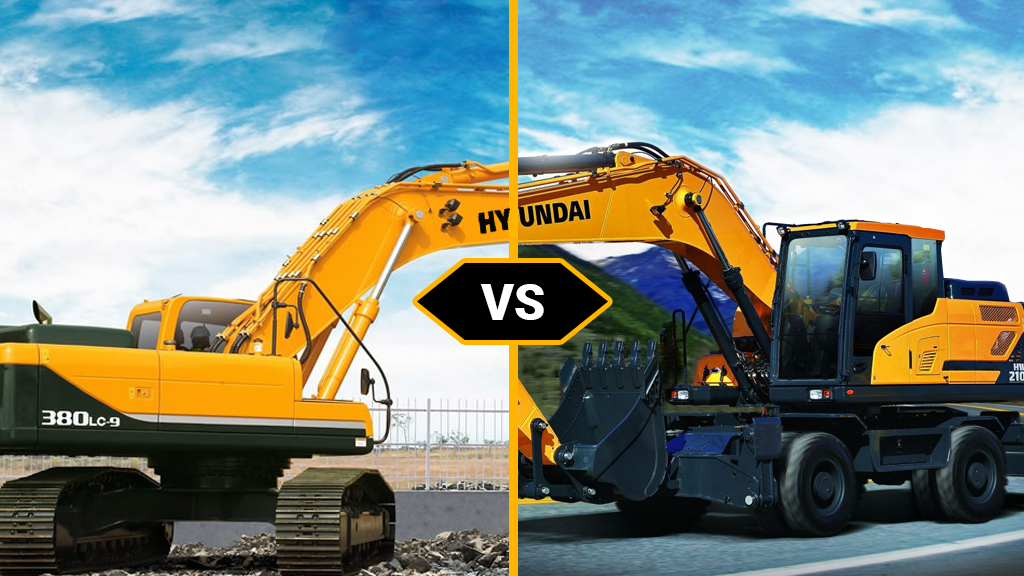You’ve probably come across tracked and wheeled vehicles in your search for new or used construction equipment for sale. Tracks come in a variety of steel and rubber rollers, while wheels have solid, pneumatic, or cushion tyres. The big question is how to choose between tracked and wheeled machines. Here are five key consideration to make before settling for either.
1) Manoeuvrability
Manoeuvrability is perhaps the most important consideration when choosing between tracked and wheeled equipment. Tracked vehicles generally have much better traction on just about any surface. This is because the weight of the machine is spread out on a large surface area in contact with the ground.
However, on bumpy terrain and snowy surfaces, tyres provide better traction and drive comfort than tracks. Plus, standard steering on wheels as opposed to skid steering on tracks offer more precise and intuitive handling control.
2) Cost
You’ll find that even when comparing used equipment, tracked machines cost a lot more than their wheeled counterparts. A track excavator for sale bears a higher price tag than a wheel excavator for sale. Also, tyres and other wheel components are much cheaper to replace than tracks. In this perspective, wheels are more cost-effective than tracks.
However, the cost comparison is not that easy. In most cases, heavy tyres have to be replaced after every 600 – 1,000 hours of use. Rubber tracks, on the other hand, can last for up to 1,600 hours, and steel tracks have an even longer lifetime. It’s all about making an accurate prediction of the long-term running cost.
3) Ground impact
Wheeled machines have a heavier impact on loose ground surfaces than tracked vehicles since they exert more pressure onto the ground. For this reason, tracked vehicles are better for grading and landscaping. But, keep in mind that heavy steel tracks rip up solid surfaces such as concrete and tarmac.
4) Durability and reliability
Tyres are vulnerable to punctures, flats and shredding, which makes tracks more reliable in comparison. However, durability is determined by the work done and the conditions of the worksite. For instance, rubber tracks wear a lot faster when working on solid ground than on loose surfaces. Steel tracks rarely get damaged even on hazardous surfaces.
5) Versatility
Machines fitted with wheels tend to be more versatile than those on tracks. All round, tracks provide better grip, traction and manoeuvrability, but they have their limitations. Tracked construction vehicles move at much slower speeds and are not suitable for covering long distances. Also, the noise and vibrations produced by steel tracks make them unusable in certain applications, especially in residential areas.
Conclusion
Even when considering the cost, the choice between tracked and wheeled machines should be determined by the nature of the application. Consider the demands and constraints of the work environment to decide on the most suitable equipment.
Browse through our selection of both tracked and wheeled construction equipment for sale from diggers and excavators to loaders, and make your pick.


 1400 Broadfield Blvd, Houston, TX 77084,
USA.
1400 Broadfield Blvd, Houston, TX 77084,
USA.